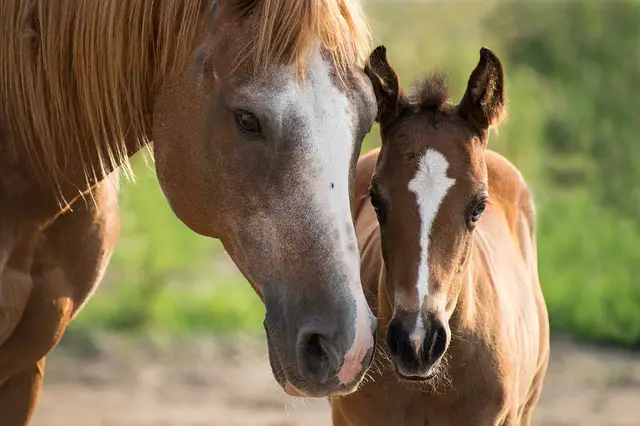What is the cost per month of horse insurance? What does it cover? How to choose the right company?
Owning horses is expensive, and you would consider an excellent insurer to pay when you need it. You may find cheaper insurers, but read reviews about claiming before using more affordable options. There are those companies that will squirm their way out of paying when they should (the worst of those I’ve seen have been with specific Horse Insurers, however). There is absolutely no point in having insurance in the first place if they do not pay out when you need it. The difination of Horse insurance is not critical. These are the insurances that cover the horse in the event of the following situations.
| Type of cover | Description |
| Breeding | It covers for any injury or illness that makes the Stallion/Colt permanently and totally impotent, infertile or incapable of breeding services. |
| Cosmetic | It covers permanent scarring after an injury, illness and or cosmetic condition. Suppose the horse is permanently incapable of continuing its main use, as mentioned in the schedule because of its looks or appearance. |
| Horse Trailers/Float | It covers the damage or loss caused by fire, accident or theft for horse floats. |
| Loss of use | It comes to place and covers if an illness or injury results in the horse. And the Injury makes the horse totally incapable of fulfilling its main use. |
| Mortality cover | Suppose there is an injury or sickness. It is a cover for death & euthanasia based on humane grounds. |
| Personal accident and dental cover | It covers any accidental bodily injury the horse gets. It may happen during riding or controlling a horse, which leads to disablement or even death. |
| Public liability cover | It is a cover for any legal liability in respect of disease, accidental death, bodily injury of a person and loss to tangible property. Sometimes it may arise from your use and ownership of the insured horse. |
| Saddlery and Tack | It covers the damage or loss to the riding equipment. |
| Theft or straying | Suppose the horse is stolen or strays between the insured period. And it is not recovered within 90 days |
Reputation is essential when choosing a pet insurer. Whether you are concerned with horses as a hobbyist or crucial to your profession, you will want to make sure you can look after them in times of need. It’s always a good idea to shield your more valuable assets. So getting cover for veterinarian bills, unexpected injuries, saddlery, and horse insurance may be essential for safeguarding your horse and yourself.
Suppose you are considering taking out horse insurance cover. Asking a veterinarian to scan your horse for any health problems would be a good beginning. The exact type of cover and advantages will differ between policies. Therefore, exploring what cover would suit you and your horse will confirm that you approach your needs. There are general cover options or policies specific for breeding, riding, and other uses.

Factors affecting Horse Insurance premium
Several factors influence the cost of your horse insurance premium:
- Horse age
- Horse gender
- Horse breed
- Horse value
- Type of policy chosen
- The number of horses insured
- The cost of gear you are planning to insure
Like all insurance policies, you must know what is in your horse insurance cover.
What are the types of Horse insurance covers?
Basic Cover
Most horse insurance policies provide mandatory basic cover for ‘death, theft and straying.’ In one of these situations arising will pay out the horse’s market value. There is a range of additional, optional benefits available, which allow you to create a policy that suits your requirements.
Vets Fees: It covers the veterinary costs of treating an illness or injury, including diagnostics and complementary treatment. The right cover will also provide peace of mind that you can afford the best care for your horse without the worry of expensive vet bills.
Permanent Loss of Use: This pays up to 60% or 100% of the sum insured. It may arise due to an illness or an injury, and the horse is permanently unable to participate in one of the activities for which it is insured.
Third-Party Liability: Pays towards legal costs and compensation if you are found legally liable for damage or injury, or death due to an incident involving your horse.
Personal Accident: Can provide financial support in the event of an accident that results in injury to the rider or handler of the insured horse.
Saddlery and Tack: Pays towards the cost of repair or replacement of lost or damaged saddlery and tack.
How to choose the best Horse Insurance company?
It’s important to remember that not all horse insurance is the same. Always compare the cover offered by several companies and never decide based on price alone as this can prove a false economy. Vets fees are one area where cover can vary considerably, so check what is included. At what age the policy will stop providing illness cover, whether all diagnostic work is covered, and find out whether there is a flat or a percentage excess. That will affect the amount you have to pay in the event of a claim.
It would be best to consider what activities the policy covers as horse insurance companies will not pay out for incidents. Those may occur in the course of an action for which the horse is not insured.
How old is your horse?
Older horses can make great schoolmasters and ‘first-time buys.’ Horse insurance policies are available that provide full cover for equine veterans. Petplan Equine’s Veteran Plan for Older Horses, launched in 2007, entitles horses insured before their 20th birthday to entire illness and injury cover until they reach 25 years of age.
Cover Whether You Own a horse or Loan
Horse insurance is also crucial if you take out a horse on loan and should be included in the written agreement between you and the owner. Ensure that you know what insurance the owner has, which will help determine what horse insurance you should take out.
Suppose the horse is already insured. Ask the owner to confirm what cover is in place. It is crucial to agree on what would happen if the horse required veterinary treatment, such as who would agree on the course of treatment with the vet and who will pay the insurance excess. Deciding these things in advance can help make the situation less stressful for both parties and prevent misunderstandings.
You should also find out if the owner has cover for Personal Accident and Third Party Liability and how much this would cover you. Some policies only cover named riders, while others cover anyone riding and handling the horse with the owner’s permission.
Suppose there is no provision in the horse owner’s policy for Personal Accident or Third Party Liability. It would be best if you considered taking out Rider insurance. This type of insurance is designed for people who ride but don’t own a horse or have a permanent loan. Some Rider insurance policies also cover emergency vet fees if the horse you are riding is injured and needs immediate treatment.
Is it possible to insure an older horse?
Several insurers offer veteran horse insurance, but the definition of ‘veteran’ varies from 16 and older to 20 and older or even 25 and older. Some policies have upper age limits, and some don’t. Most veteran insurance only covers death from an accident, and vet fee cover is usually only offered for accidents, not illnesses. Theft and loss from straying are covered. It’s always a good idea to get a few quotes to see who will provide the best cover for your older friend.

What Should You Consider When Comparing Horse Insurance Companies?
There are many factors to consider to compare equine insurance companies and policies.
Horse Insurance Cost
As with any insurance policy, cheap horse insurance isn’t always the best way to go. It’s crucial to compare horse insurance quotes, but be sure to pay attention to your deductibles, what services are covered, and any additional out-of-pocket expenses.
In general, you can expect to pay roughly $150-200 per year for $5,000 worth of major medical coverage expenses. Surgical coverage rates vary widely, and mortality premiums depend on your horse’s age, use, and value. Annual rates can range from 3% or more based on the insured value of your horse.
Limitations
Policies can vary in their exclusions, so be sure to read the fine print. Most horse insurance policies don’t cover over 15 years, and most don’t cover pre-existing and degenerative conditions.
More On Pre-Existing Conditions
Horse insurance policies re-adjust their exclusions and what they consider a pre-existing condition each year. Although you’re renewing a policy, it’s still considered a new policy period. So if something happens to your horse while he’s insured, the insurance company may exclude that condition as a pre-existing condition during the following year.
What are my insurance options if I ride horses that belong to someone else?
There are many rider-only policies on the market to protect you if you ride someone else’s horse or pony. The insurance provides personal accident cover third party liability cover and often offers custodial liability cover. Many providers allow you to choose the level of cover you buy.
If you want to buy cover for your death and permanent injury or disability, check the policy wording as not all providers cover rider death. Dental repair is worth checking carefully, too, as some providers will protect any dental work and others don’t. Some policies include limited cover for emergency vet fees in an accident. The cover is available for riders from 5 to 75 years of age.
If I save the premium value each month, is that an alternative to buying horse insurance?
Some people consider saving as much as they can each month. They hope it will cover vet fees or other costs resulting from personal injury or an accident. All responsible horse owners should have Third Party Liability insurance. And they also have a form of personal injury insurance to protect you from enormous liability should the unthinkable happen.
Vet fee insurance can be expensive, but vet fees for diagnosis and treatment can be costly, quickly mount up and become unmanageable. It’s important to consider what you could afford if your horse suddenly fell ill or had an accident. Do you think saving money each month will likely cover the fees sufficiently? It is a considerable risk to leave yourself exposed to climbing vet fees. You risk having to make a tough decision about your horse’s future for financial rather than health reasons, a position no owner wants to be in.
Horse Health Insurance to cover vet fees is for the unthinkable. It’s there so that when your horse needs you, you don’t have to think twice about buying them the best possible care so that they can get back on their feet quickly.

How much is horse insurance per month?
The cost of insurance to cover death, straying, theft, vets fees is expected to cost a minimum of $ 35 per month. The cost of insurance will vary quite dramatically depending on the type of cover taken, the value of the horse, and its intended use. It is not unusual to see over $70 per month insurance costs.
How beneficial is it to understand policy features and exclusions?
Claims being unexpectedly rejected are one of the main reasons people become disillusioned with their insurance. It’s vital to thoroughly check the terms and conditions to understand what is excluded and the coverage limits by claim types. All insurers specify your responsibilities in the care of your horse so read those details carefully to make sure you are complying with their requirements. Some also have rules about when you have to claim after consulting a vet, so watch out for sneaky regulations, too!
It’s a good idea to check the initial waiting period, which is the time that needs to pass after taking out the policy before you can claim.
Suppose you buy Horse Health Insurance. Check whether or not your policy covers illnesses or just accidents and injuries, as many health insurance policies for older horses will only cover accidents. It is usually possible to choose the vet fee cover you buy.
You will need to know if the cover is per condition or for total vet fees in a given time. Suppose you have per condition cover. The pay-out limit may also be time-limited. The claims for anyone condition will cease to be covered once you reach your pay-out limit for that condition or (for example) 12 months elapses from the first on-set of the situation. Please check the details with your chosen insurer.
A common exclusion is ‘pre-existing conditions. The insurer will not cover any claims linked to an accident or illness that occurred before you took out your policy. That can also extend to excluding conditions developing in the opposite limb to a previous occurrence of the same situation. For example, suppose your pony has a ligament strain in the left foreleg. In that case, a similar pressure in the right foreleg might not be covered. That is why it is a good idea to buy horse vet fee cover as soon as you get your horse or pony. Still, you may need vet fitness certification before the policy is confirmed.
All insurers will ask you to specify the types of activities you and your horse enjoy before quoting. Check the different activity classifications to ensure you select the correct one. If you are not sure, please ask the insurer to help you.
If you have any questions about coverage, please ask the insurer before you buy to make sure you purchase a policy that is right for you.
Does horse insurance cover vet bills?
Most basic horse insurance policies do not include vet fees cover as standard. So make sure this is included if you want to be protected against the cost of treatment. Permanent loss of use: If your horse is ill or has an accident which means you can no longer ride them, your policy can pay up to the sum insured.


















